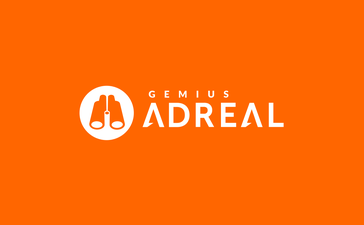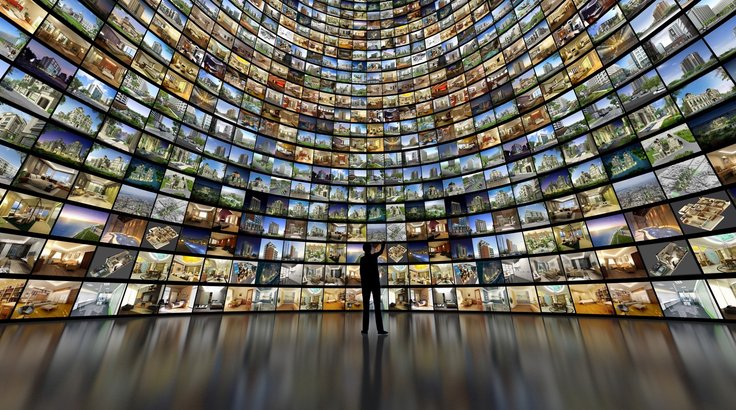
Media reset 2021. A strategy known as a Tactic. New rules in media planning
2020 brought unexpected and rapid changes in the hierarchy of values in our lifes. As a result of the pandemic and the lockdown, the pyramid of needs was reversed within a few days. So the most important thing was not to seek self-realization or respect, but to ensure physiological needs and security. Our homes have become the main centers of life, work and rest. The society, unable to use traditional forms of spending free time and entertainment, started to use "home" entertainment with increased activity - including television and Internet media.
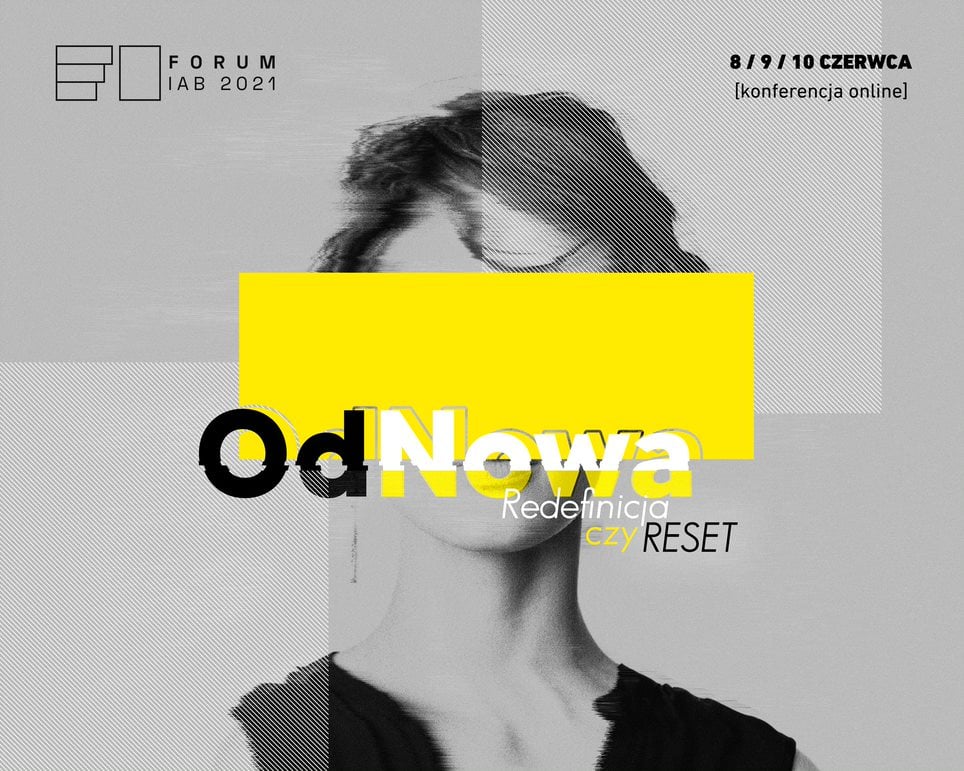
How did advertisers respond to the crisis?
As the three most common reactions of advertisers to events related to the outbreak of the coronavirus pandemic, Lucyna Koba indicates:
• Maintaining standard communication, without any changes;
• Introducing special, "covid" views of advertisements and communication;
• Complete suspension of advertising communication.
The chart below shows the data from the gemiusAdReal research on advertising activity in individual industries for the period from February 2019 to the end of 2020. The Gemius expert pointed out that the moment of breakdown is clear - the lockdown - and the reactions of advertisers who stopped their advertising communication (mainly a video campaigns), or drastically reduced its scale. It was only with the passage of time, when the situation was still uncertain but consolidated in the public's mind and it was clear that it would be long-term, that advertisers gradually began to "free up" their advertising budgets by resuming communication.
The collapse concerned not only industries that have obviously lost the ability to function in a traditional way (e.g. the tourist industry), but also those selling basic necessities (pharmaceuticals, food).
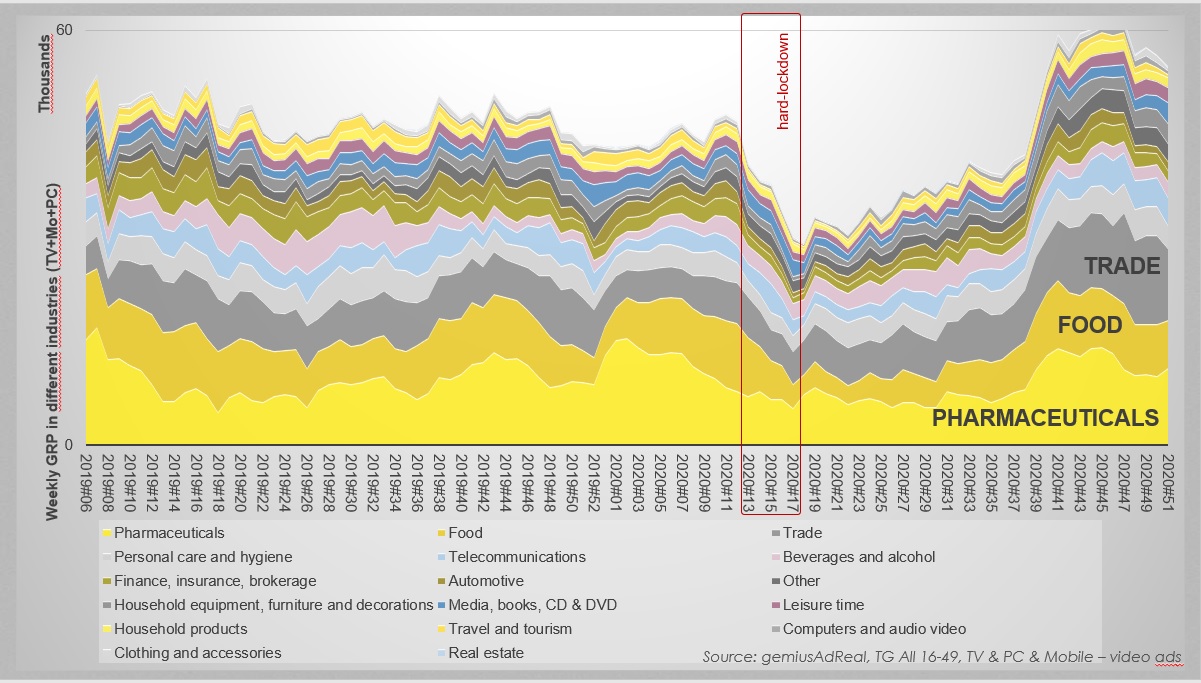
As the Gemius expert points out, lockdown and its effects have created an unprecedented situation. Media consumption grew dynamically among the society. TV viewership recorded results that the oldest media researchers did not remember, while the average time of viewers' contact with a TV advertisement dropped sharply due to the limited supply of advertisements. Only as advertising budgets were freed, did it begin to grow again.
This situation is illustrated by the data for the period from February 2019 to the end of 2020, showing the average time spent by viewers from all age groups with advertising.
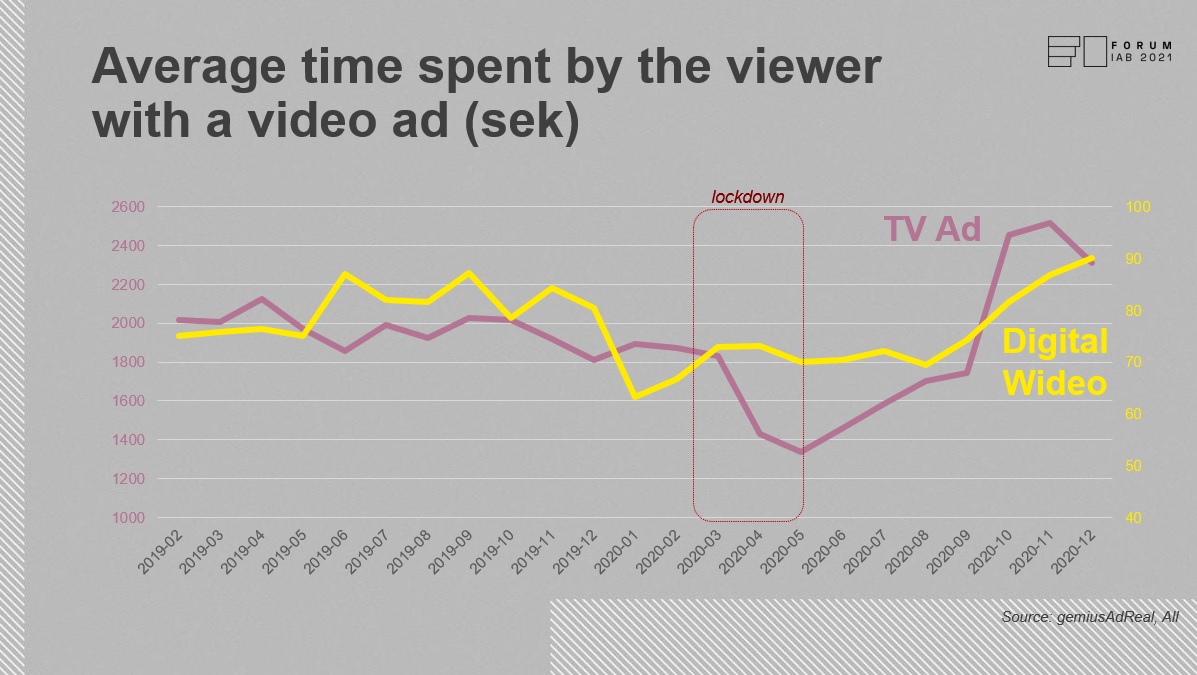
Growing appetite of viewers on video...
… and media consumption has become a fact. As the Gemius expert stated, this trend is key in the media world. Researchers indicate that it will remain long-lasting, even after reducing the effects of the pandemic and returning to the reality known before 2020.
The growing interest in video content among recipients encouraged advertisers to meet their expectations in a short time. Video is not just television. Streaming services turned out to be the biggest winners of the pandemic reality in the media world. They replaced cinema and offered additional content that the viewer could not find on linear television.
The global giant - Netflix turned out to be the leader on the Polish market. Player stood out among local distributors, which in February 2020, on the wave of growing interest in streaming services, decided to give up free access to its materials. Using the premiere of the popular in Poland film series "Letters to M" (Listy do M), Player encouraged viewers to subscribe it.
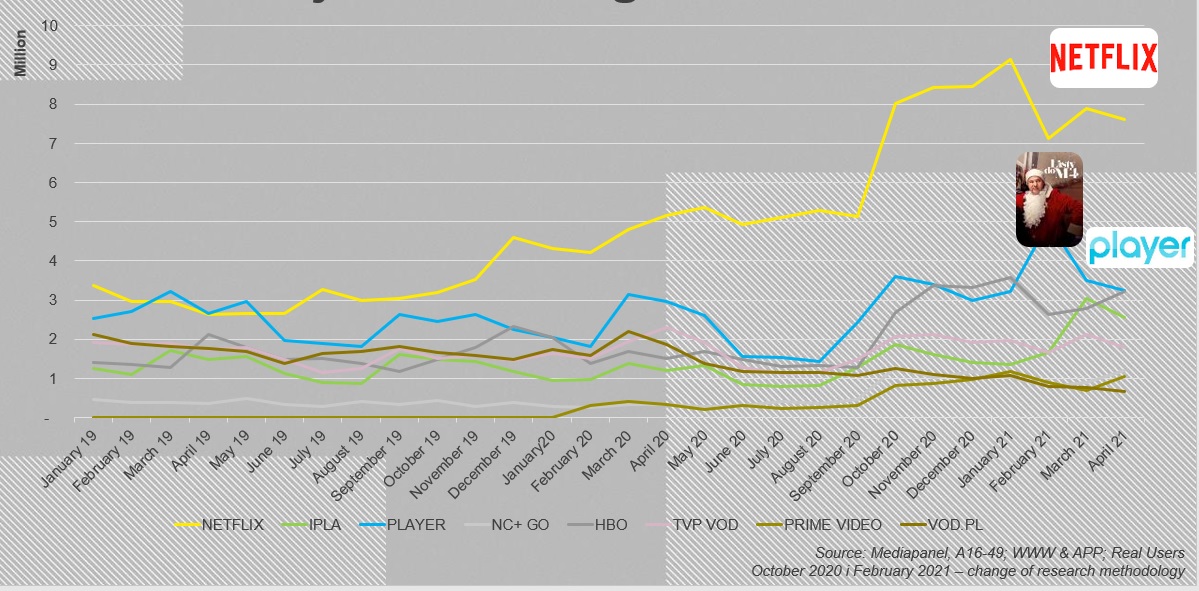
The advertisement promoting the subscription to the paid version of Player took place both on television and online. In February 2020, the advertisement reached almost 17 million recipients from the commercial group 16-49. Thanks to the results for this period, obtained from the gemiusAdReal tool, it can be seen that 12% of the total reach came exclusively from online video advertising.
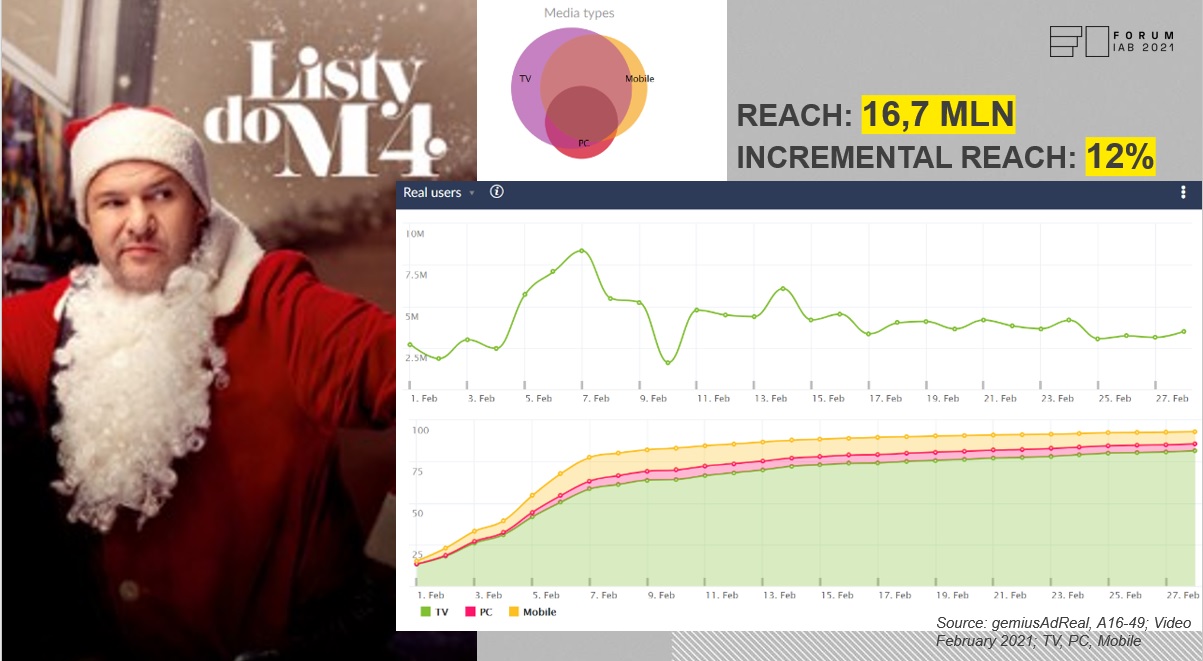
Television is still on the top
Despite the ever-growing interest in streaming services, television remains the undisputed leader when it comes to advertising consumption. Using the data from the Mediapanel study, the Gemius expert analyzed the advertising reach of Discovery (i.e. the owner of the aforementioned Player). Data for April 2021 for the commercial group 16-49 show significant differences both in terms of coverage and time of advertising consumption, in favor of television stations.
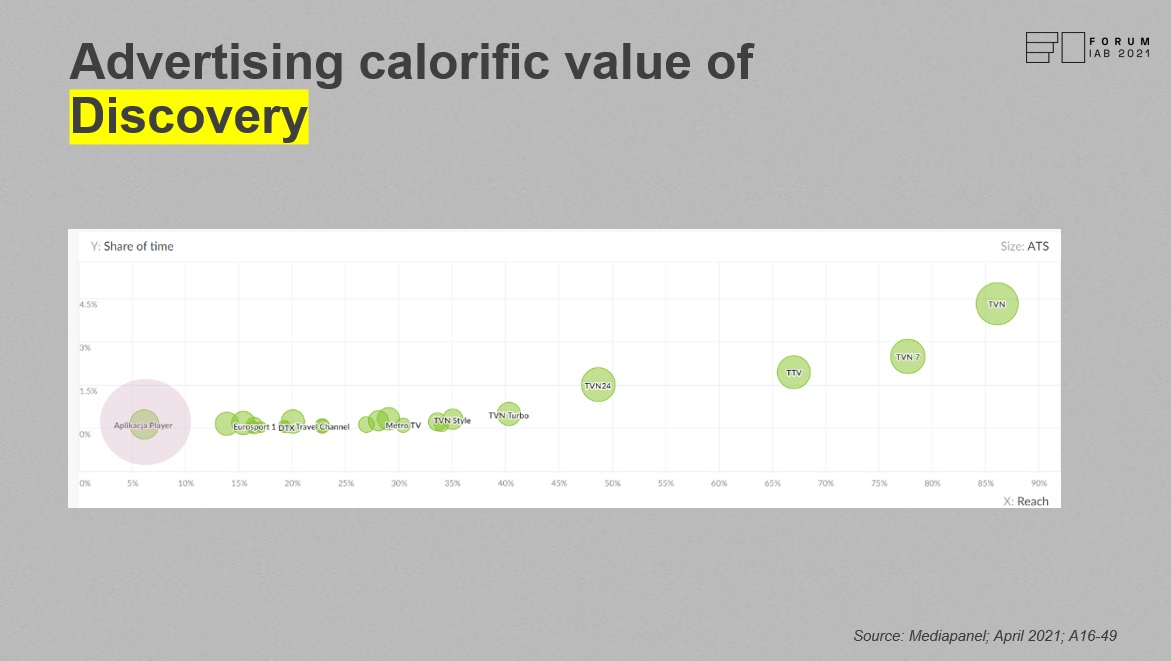
According to the data published by GroupM, among Polish TV broadcasters the share of advertising revenues of their streaming services is 4% - i.e. comparable to the European average. Only a few European broadcasters can boast a double-digit result of BVOD share in advertising revenues.
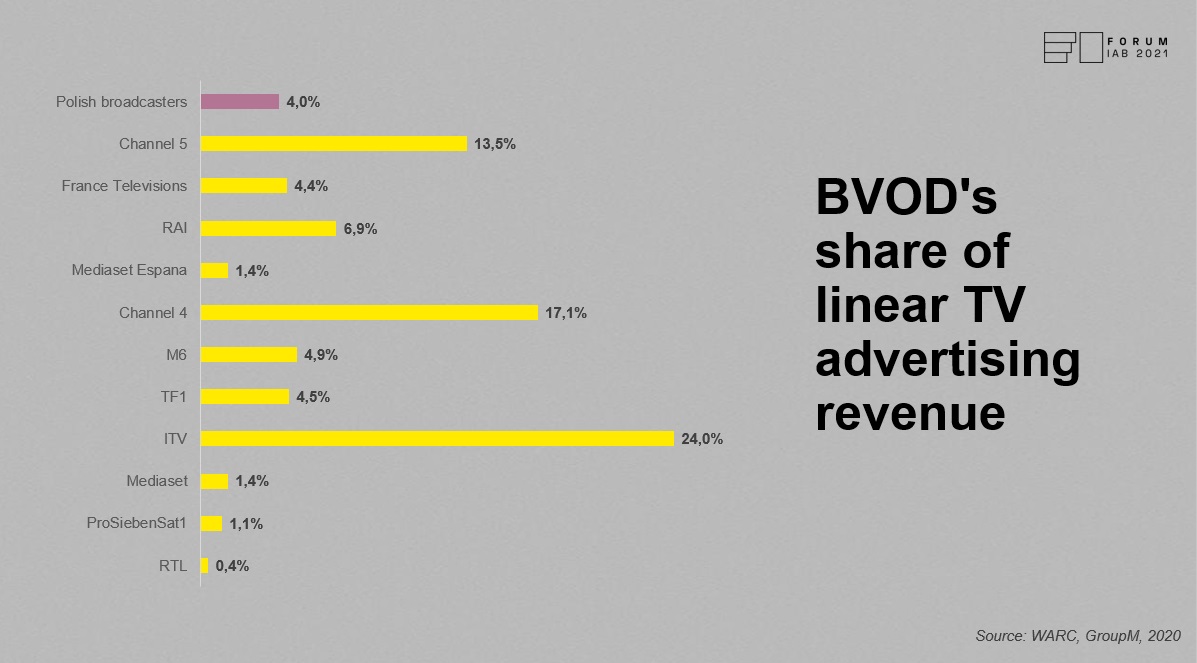
Streaming video is becoming more and more common
Despite the dominant position of linear television, streaming services are becoming more and more common. The most popular group of VOD recipients is the commercial group 16-49, which is confirmed by the Mediapanel data for April 2021. According to the data analyzed by Lucyna Koba, in the same period this group also has the highest, over 120% affinity index.
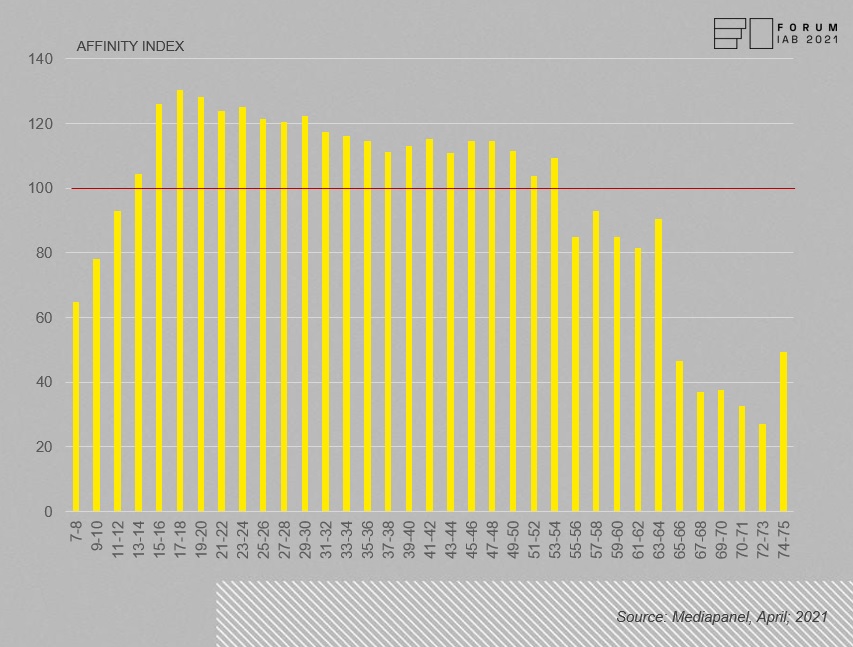
Video on Demand is convenient for the viewer - available at a convenient time. Does this mean, however, that recipients have abandoned traditional linear television when using streaming services? Is it no longer attractive? As the Gemius expert answers - not exactly.
- Traditional TV still has interesting options to offer. Linear television has no equal when it comes to the so-called live coverage. This is reflected especially in the case of domestic and international information as well as popular sports events. Television is now a medium not only attracting the so-called full involvement (intentional home viewing), but also acts as a medium in the background (more accidental, unintentional contacts - e.g. when visiting friends or staying at the gym).Analyzing the Mediapanel data for April 2021 for the commercial group 16-49, the Gemius expert noted that out of home tv viewing achieves similar results to tv home viewing. It can therefore be concluded that when it comes to coverage, television is still a strong player on the Polish market.
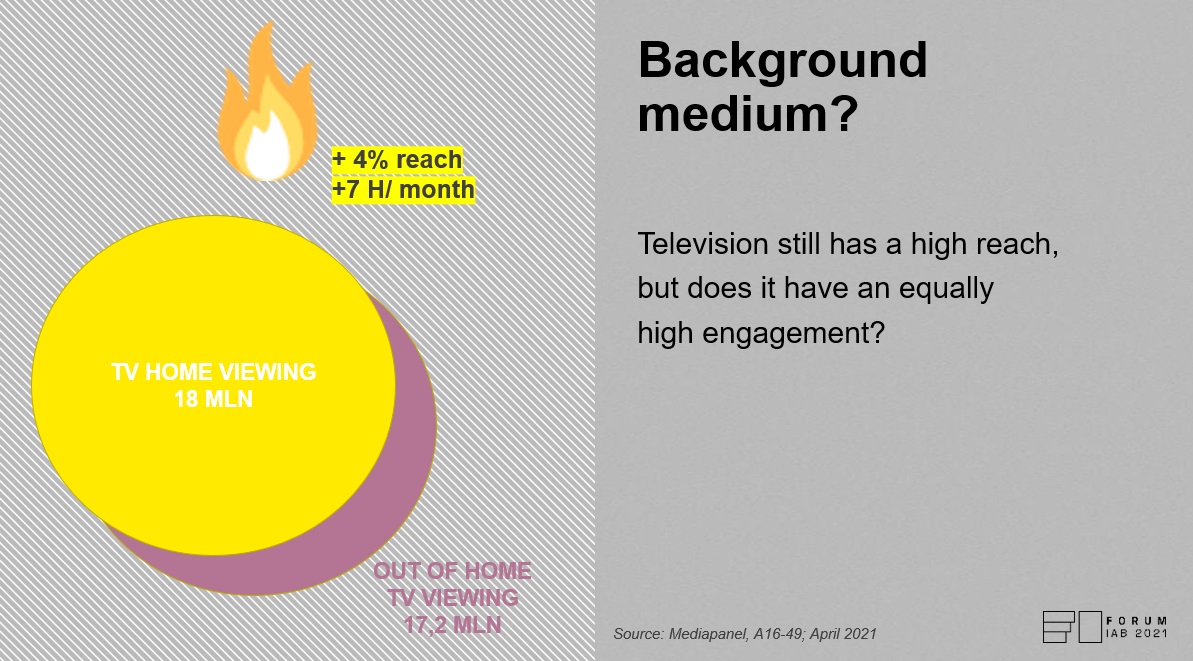
What about the commitment?
Commitment is an equally important aspect in an effective advertising campaign. What is it like when it comes to traditional television? Gemius data from a single-source study shows the structure of women in the 16-49 age group watching TV in April 2021. As many as 92% of them used a smartphone at least once during a TV commercial break, devoting their attention to mobile internet. Over 80% of them did it within the first 30 seconds of the advertising break. As the Gemius expert notes, these data are slightly different in the case of men from the same age group examined in the same period. 11% of them do not distract their attention during advertising breaks.
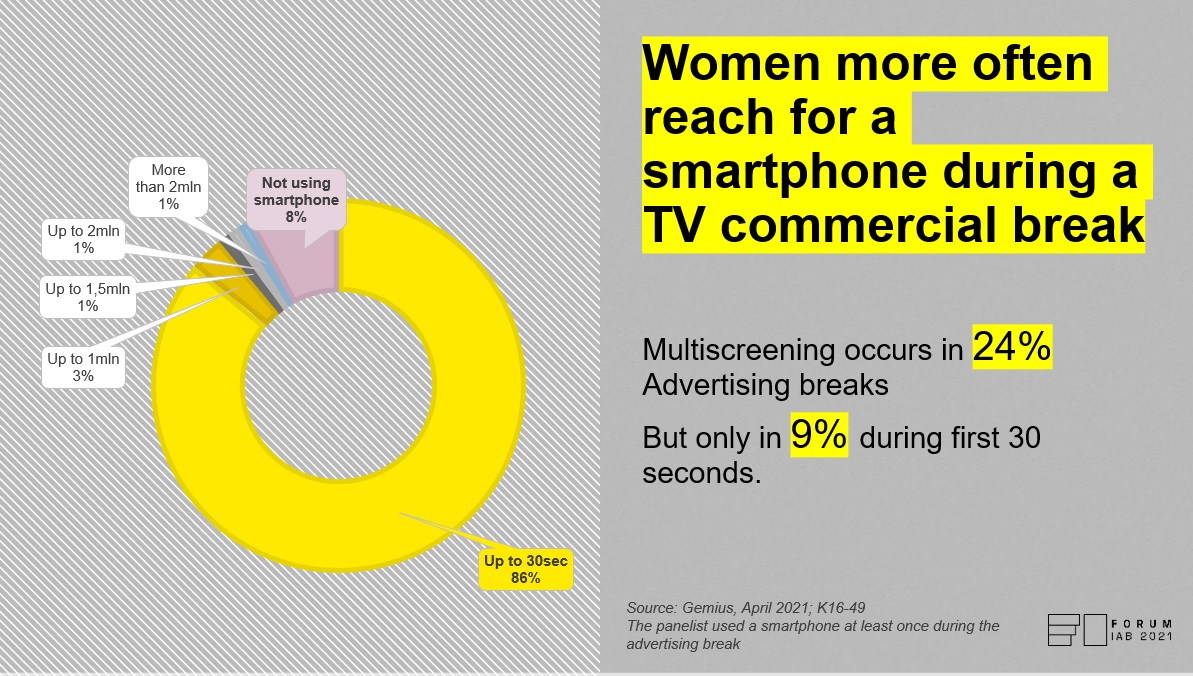
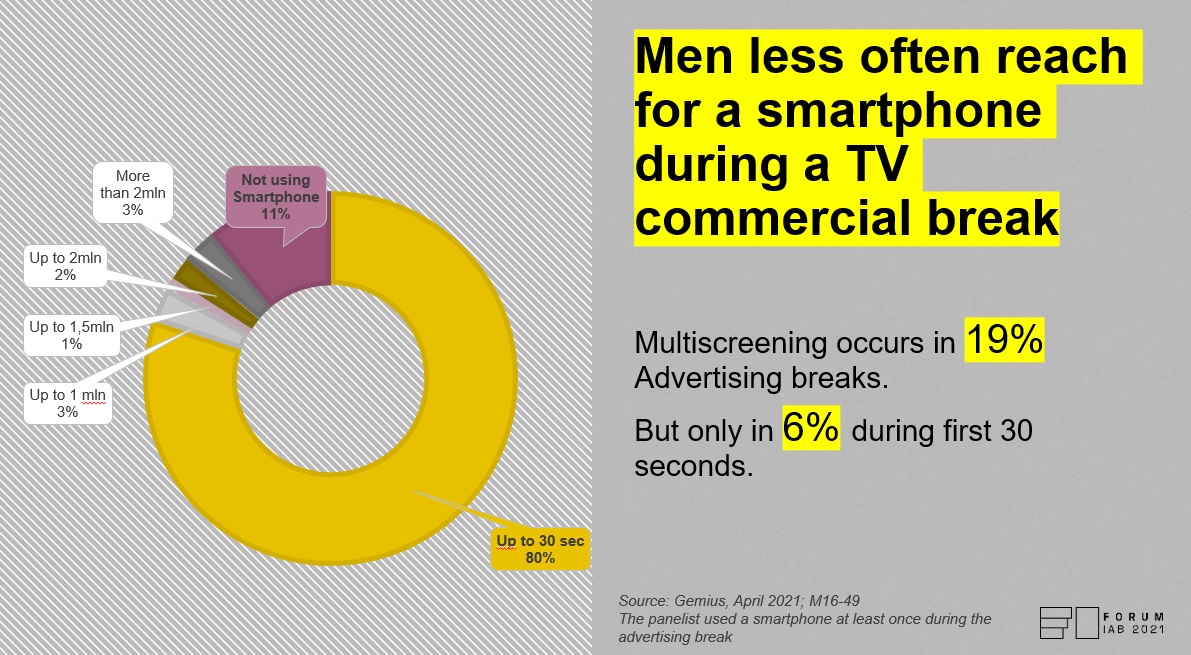
Efficiency and agility
The new, pandemic reality has brought about uncertainty and changed the expectations of advertisers in relation to what media administrators can offer them. The researchers noted a significant increase in expectations for greater flexibility in the approach to the advertising campaign. Advertisers also began to pay more attention to the measurability of the short-term effects of advertising campaigns. Standards known so far mainly from the world of online media began to be expected in traditional media.
When talking about efficiency in the context of linear television, it is impossible not to mention Adressable TV. What counts here is the dynamic insertion of spots during traditional television broadcast, the possibility of targeting recipients by place of residence or interests regarding the content. In short? During the same advertising break, two different households may receive a completely different advertising message. However, this area remains a relatively young area, subject to many restrictions (mainly legal) and still developing.
Technology providers - a new player on the media market
Today, also technological giants want to participate in the optimization of advertising campaigns. One of the examples is Samsung - the leader in connected TV sales. Based on its own data, it is able to segregate recipients into those using only linear television and fans of streaming services. Thanks to this, Samsung has the ability to add incremental reach to TV campaigns.
Television rules the Polish market
The Gemius expert pointed out that when it comes to the Polish market, television is still the undisputed leader of video advertising broadcasts. However, when analyzing data from the gemiusAdReal tool for April 2021 for the commercial group 16-49, the online market has two leaders - YouTube and Facebook. Each of these channels protects access to data and does not allow its measurement with external systems. Therefore, the optimization of advertising campaigns takes place separately within each of these media, without the mutual exchange of information.
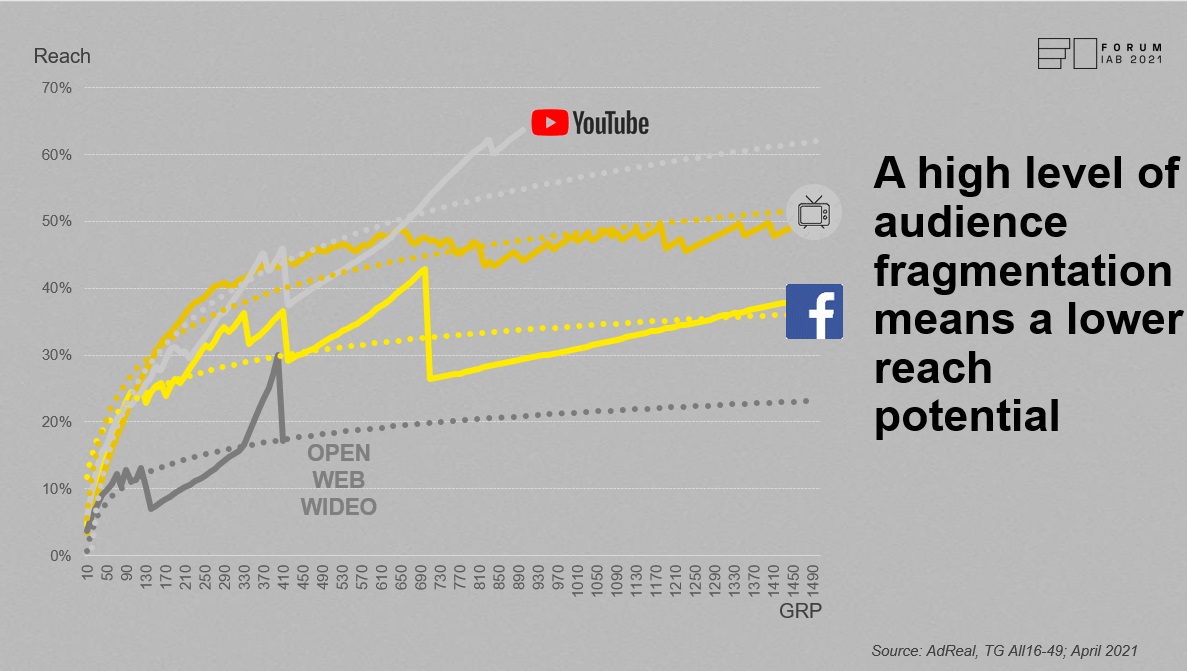
As Lucyna Koba notes, fragmentation of video consumption creates a complex picture of data from various sources. The lack of a common ID makes it impossible to estimate the true reach and frequency of the campaign.
What will happen in the industry in near future?
The Gemius expert predicts that in the future we will have to limit the importance of cookies that are popular today. Instead, modern media silos will be built. The challenge for the entire media industry is to establish a unified ID or a method that will allow you to determine the net reach. The industry is facing a redefinition of traditional media planning principles as well as approaches to measuring media consumption.

